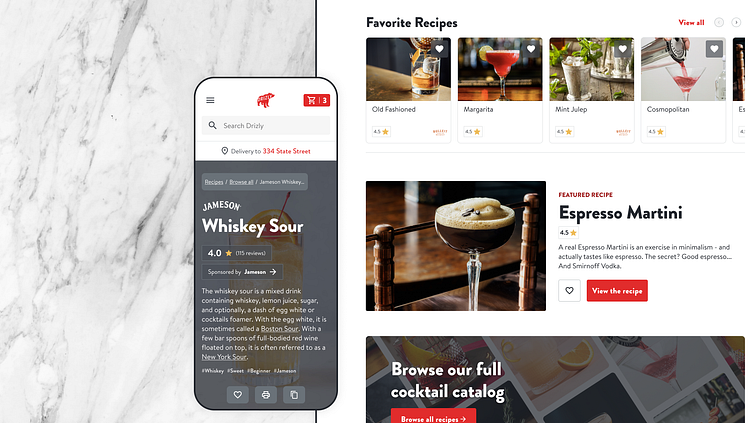A design system and redesign
Identifying the project
The first challenges with this client began immediately. An executive hired us to do an undefined amount of work. We also found out that this company already had a design team — with their own roadmap, vision, and interests — and they hadn't been informed that we were being hired. This kind of political maneuvering is fairly common in my experience of agency life, and it's a situation I've gotten pretty good at navigating.
My first goal was to align with the in-house design team and position the relationship in a way that made them feel empowered and supported, while giving us enough space to deliver. My team worked diligently to earn their trust, giving them our ear, and following their lead for how they would like to use our skills, rather than asserting ourselves into their domain.
Everything can be high quality
One method I employed to build trust with the client was ensuring that everything that our team delivered was professional and beautiful. Usually at my agency, we work a little scrappier, focusing on delivering excellent code and useful products, while overlooking the look and feel of the artifacts around that work — from presentations to research deliverables. By maintaining a higher level of quality for deliverables and ensuring every interaction with the client was cohesive and well rehearsed, we quickly earned their trust and uncovered the real work to be done: a true design system.
Helping a client mature
Once the client trusted us and we got a view behind the curtain, we found out that every page in their product was hard-coded and every design file was built from copying and pasting from other older files. They had no organized, single point of truth. They had no design principles. And their code was inconsistent, bulky, and difficult to update.
We executed this plan and delivered a complete design system in 2 months:
We conducted a full audit of the client's product, uncovering every type style, color, and component currently used.
We built a consolidated and variant-based Figma design library that was organized and built for growth. We also updated the type styles, color palette, and components to be more modern and accessible.
We delivered a robust design system documentation in Confluence that could easily be updated and understood by any of the client's employees.
Our engineers built the entire design system in Storybook to act as one point of truth for every engineer on the client side.
Unlocking new work
Delivering this massive piece of work, which improved both the client's product and their internal workflows, garnered us even more trust. The client then entrusted us to completely reimagine their entire recipe experience.
I worked with a junior designer and together we delivered a brand new experience following this process:
We audited the current recipes experience
We conducted thorough competitive analysis
We established an IA and user flows
We tested wireframes with real users
We presented a series of high-fidelity iterations
We added new components to the core design system
We documented the whole experience in Confluence so the client could build it when they were ready.
Inspiration
Uber Eats
Amazon
Instacart
Minibar
Epicurious
New York Time Cooking
Blue Apron
This work was done while I was a Lead Product Designer at Postlight



